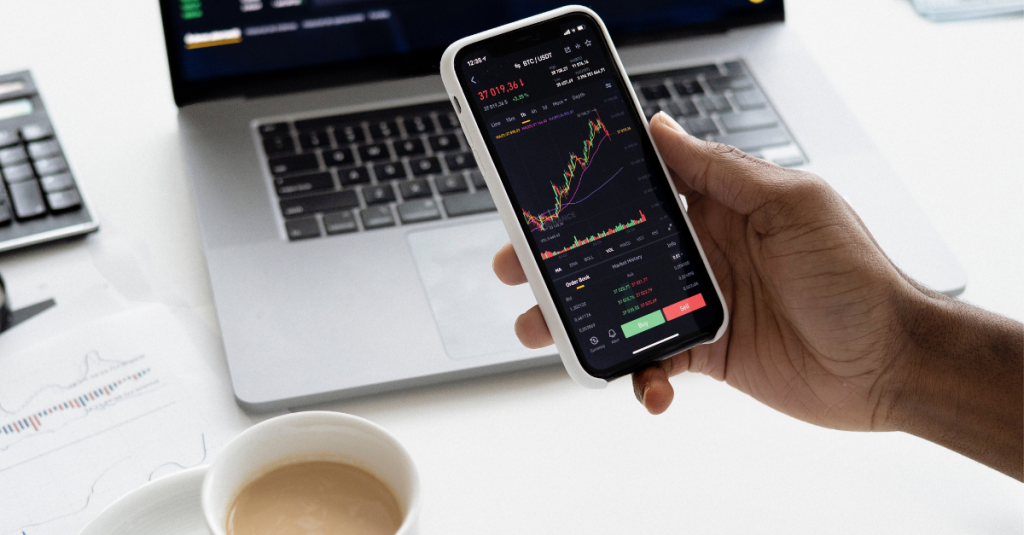When you begin trading, you will likely come across the term ‘alpha generation’ which is crucial for investors who seek to outperform the market and achieve higher returns. But what exactly is alpha generation and how does the S&P 500 serve as a benchmark for alpha generation?
In this article, we discuss what alpha generation means, what the S&P 500 is and how it influences alpha generation and how One-Signal helps investors with alpha generation.
What does “alpha generation” mean?
“Alpha generation” is a financial term used to describe the process of producing a higher-than-average return on investment. Alpha is a measure of an investment’s performance relative to a benchmark index, such as the S&P 500, and it represents the portion of the investment’s return that is due to the manager’s skill rather than the overall market performance. A fund or portfolio manager who generates alpha outperforms the market through investment strategy, risk management, and stock selection. In a nutshell, alpha means earning higher returns than would be expected from simply following a market index. Even though it is a widely used metric in finance, it also presents some shortcomings, such as:
- Alpha can give misleading results, especially when used to compare portfolios from different asset classes.
- Alpha works best for stock market investments and may not work as well in markets that don’t have a reliable benchmark index.
- The Alpha value is affected by the benchmark index. This means that investors should select a relevant and representative benchmark, such as the S&P 500, for stock investments.
- Short-term focus: Alpha is often calculated on a short-term basis, typically over one year. This can be misleading because it does not consider the long-term performance of an investment.
What is the S&P 500 and why does it influence alpha generation?
The S&P 500 is a stock market index tracking the share prices of the 500 largest public companies in the United States. It is also the largest stock index and therefore serves as a proxy for describing the overall health of the stock market and the US economy. Due to its size, the S&P 500 is used as a benchmark for several funds and fund managers.
The S&P 500 is widely used as a benchmark for several reasons:
- Representativeness: The index represents a broad cross-section of the US stock market, covering about 80% of the total value of the U.S. stock market. This makes it an excellent benchmark for gauging the performance of a diversified portfolio of US stocks.
- History: The S&P 500 has a long history, with data available dating back to the 1920s. This provides extensive data for evaluating long-term market trends and is therefore suited for historical comparisons.
- Liquidity: S&P 500 stocks are highly liquid, making it easy to buy and sell them in large quantities.
- Objectivity: The S&P 500 is a market-weighted index, meaning that the stocks with the largest market capitalizations have the greatest impact on the index. This objective, rules-based approach makes the S&P 500 a transparent and unbiased benchmark.
- Accessibility: The S&P 500 is widely available, with index data and information readily accessible through a variety of sources. This makes it easy for investors to track and compare their portfolios to the benchmark.
Alpha generation trading aims to outperform the market, and the S&P 500 provides a useful benchmark for evaluating the performance of a portfolio or investment strategy. By comparing the returns generated by an alpha strategy against the returns of the S&P 500, investors can determine whether the strategy is delivering excess returns or underperforming the market.
How to use One-Signal for alpha generation
One-Signal helps investors with alpha generation by taking the stress out of daily investment decisions. One-Signal delivers daily long or short signals using the S&P 500 as its reference index, due to its size, popularity, and availability of data. Since its inception, One-Signal has outperformed the benchmark index almost every year. Between 2015 and 2022, the S&P 500 returned an average p.a. of 9.4%, compared to One-Signal Xpert with 29.4% on average p.a., generating 20.4% in alpha.
Individuals who want to use One-Signal can do so through our subscription services, which deliver a trading signal to their inbox every day for personal execution or through our execution services, where everything is taken care of, from signal generation to execution.
If you’d like to learn more about how One-Signal can help you with the alpha generation, learn more here or contact our team today.

